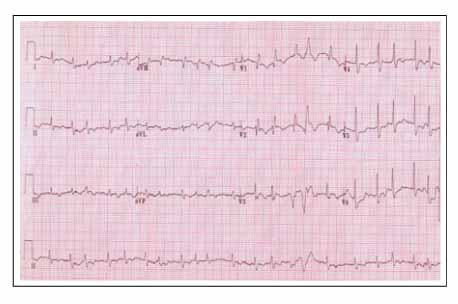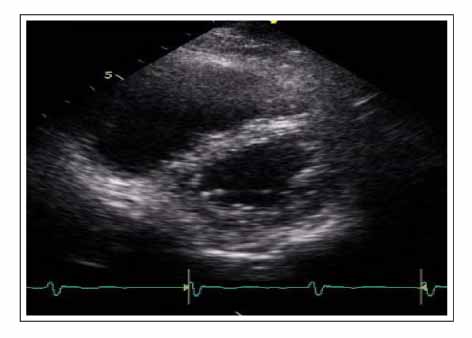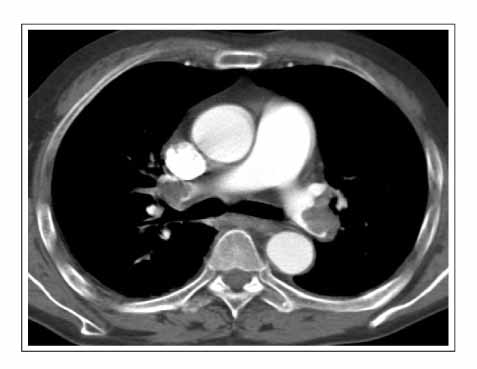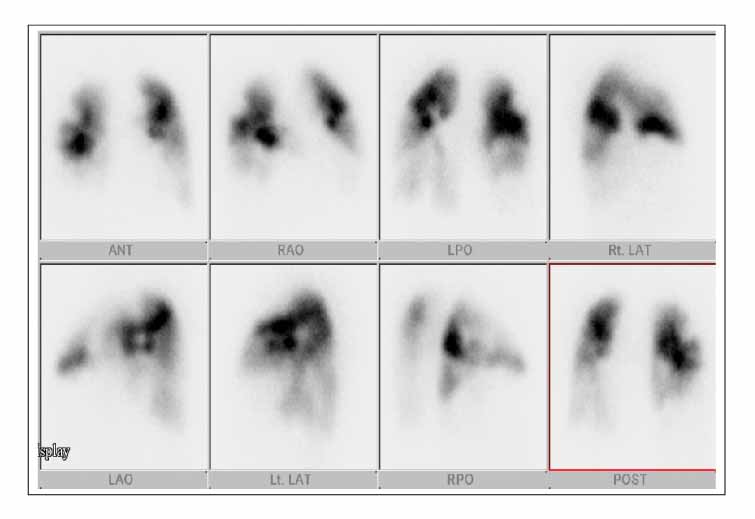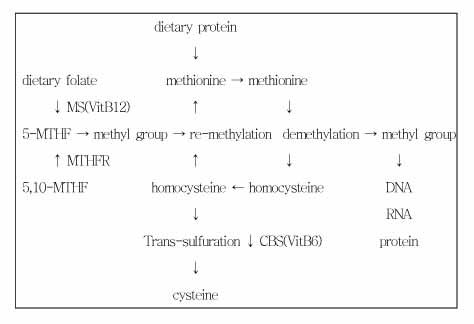Tuberc Respir Dis.
2007 Mar;62(3):211-216. 10.4046/trd.2007.62.3.211.
A Case of Pulmonary Thromboembolism in a Patient with Hyperhomocysteinemia
- Affiliations
-
- 1Department of Internal Medicine, Kangnam Sacred Heart Hospital, Hallym University Medical Center, Seoul, Korea. unny@hallym.ac.kr
- KMID: 1518466
- DOI: http://doi.org/10.4046/trd.2007.62.3.211
Abstract
- Hyperhomocysteinemia is an independent risk factor for cardiovascular, cerebrovascular and peripheral vascular diseases that are complicated by atherosclerosis and a thromboembolism. An increased level of plasma homocysteine develops from a genetic defect in the of enzyme for the homocysteine metabolism or a vitamin deficiency. Hyperhomocysteinemia has direct toxic effect on the vascular endothelium and causes damages to the antithrombotic action of vascular endothelial cells. Most cases of hyperhomocysteinemia are asymptomatic, but cardiopulmonary or cerebrovascular incidents developin rare cases. In the case of a thromboembolism with an unknown cause, hyperhomocysteinemia should be considered in a differential diagnosis. The authors report a case of pulmonary thromboembolism in a patient with hyperhomocysteinemia with a review of the relevant literature.
Keyword
MeSH Terms
Figure
Reference
-
1. Rudoni RR, Jackson RE, Godfrey GW, Bonfiglio AX, Hussey ME, Hauser AM. Use of two-dimensional echocardiography for the diagnosis of pulmonary embolus. J Emerg Med. 1998. 16:5–8.2. Kasper W, Meinertz T, Henkel B, Eissner D, Hahn K, Hofmann T, et al. Echocardiographic findings in patients with proved pulmonary embolism. Am Heart J. 1986. 112:1284–1290.3. Chang J. Acute pulmonary embolism. Tuberc Respir Dis. 2000. 48:123–148.4. Welch GN, Loscalzo J. Homocysteine and ather othrombosis. N Engl J Med. 1998. 338:1042–1050.5. Dennis VW, Nurko S, Robinson K. Hyperhomocysteinemia; detection, risk assessment, and treatment. Curr Opin Nephrol Hypertens. 1997. 6:483–488.6. Park JS, Bae WK, Lee SJ, Chung RI, Jin SL, Lee HP, et al. A case of multiple thromboembolism in hyperhomocysteinemia. Tuberc Respir Dis. 1999. 47:239–246.7. McCully KS. Vascular pathology of homocysteinemia: implication for the pathogenesis of arteriosclerosis. Am J Pathol. 1969. 56:111–128.8. Franken DG, Boers GH, Blom HJ, Trijbels FJ, Kloppenborg PW. Treatment of mild hyperhomocysteinemia in vascular disease patients. Arterioscler Thromb. 1994. 14:465–470.9. Kim YJ, Park JS, Park MH, Chang NS. The interaction of methylenetetrahydrofolate reductase polymorphism with homocysteine in pregnant women. Korean J Obstet Gynecol. 2003. 46:1525–1530.10. Brattstrom L, Wilcken DE, Ohrvik J, Brudin L. Common methylenetetrahydrofolate reductase gene mutation leads to hyperhomocysteinemia but not to vascular disease: the result of a meta-analysis. Circulation. 1998. 98:2520–2526.11. Ou T, Yamakawa-Kobayahi K, Arinami T, Amemiya H, Fujiwara H, Kawata K, et al. Methylenetetrahydrofolate reductase and apolipoprotein E polymorphisms are independent risk factors for coronary heart disease in Japanese: a case-control study. Atherosclerosis. 1998. 137:23–28.12. Oh KW, Lee WY, Ahn YB, Song KH, Yoo SJ, Yoon KH, et al. Homocysteine, folate, and methylenetetrahydrofolate reductase polymorphism in Korean normal subjects. Korean J Intern Med. 1999. 57:1030–1036.13. Eikelboom JW, Lonn E, Genest J Jr, Hankey G, Yusuf S. Homocysteine and cardiovascular disease: a critical review of the epidemiologic evidence. Ann Intern Med. 1999. 131:363–375.14. Kim SG, Kim YD, Kim SG, Jang SJ, Choi HJ, Kim BK, et al. Plasma homocysteine concentration and genotype variation of enzyme as risk factors in patients with coronary artery disease. Korean Circ J. 2001. 31:757–766.15. Jeong CH, Park Kh, Jung SJ, Choi DR, Joo DH, Lee HI, et al. Acute arterial thrombosis in leg associated with hyperhomocysteinemia. J Korean Surg Soc. 2005. 68:78–82.
- Full Text Links
- Actions
-
Cited
- CITED
-
- Close
- Share
- Similar articles
-
- Recurrent Stent Thrombosis and Pulmonary Thromboembolism Associated with Hyperhomocysteinemia
- Two Cases of Pulmonary Thromboembolism in Young Patients with Hyperhomocysteinemia
- A Case of Multiple Thromboembolisms in Hyperhomocysteinemia
- Pulmonary thromboembolism occurred immediately after leg elevation under induction of general anesthesia in a patient with femur fracture : A case report
- A Case of Hyperhomocysteinemia Manifested by Deep Vein Thrombosis and Pulmonary Embolism

